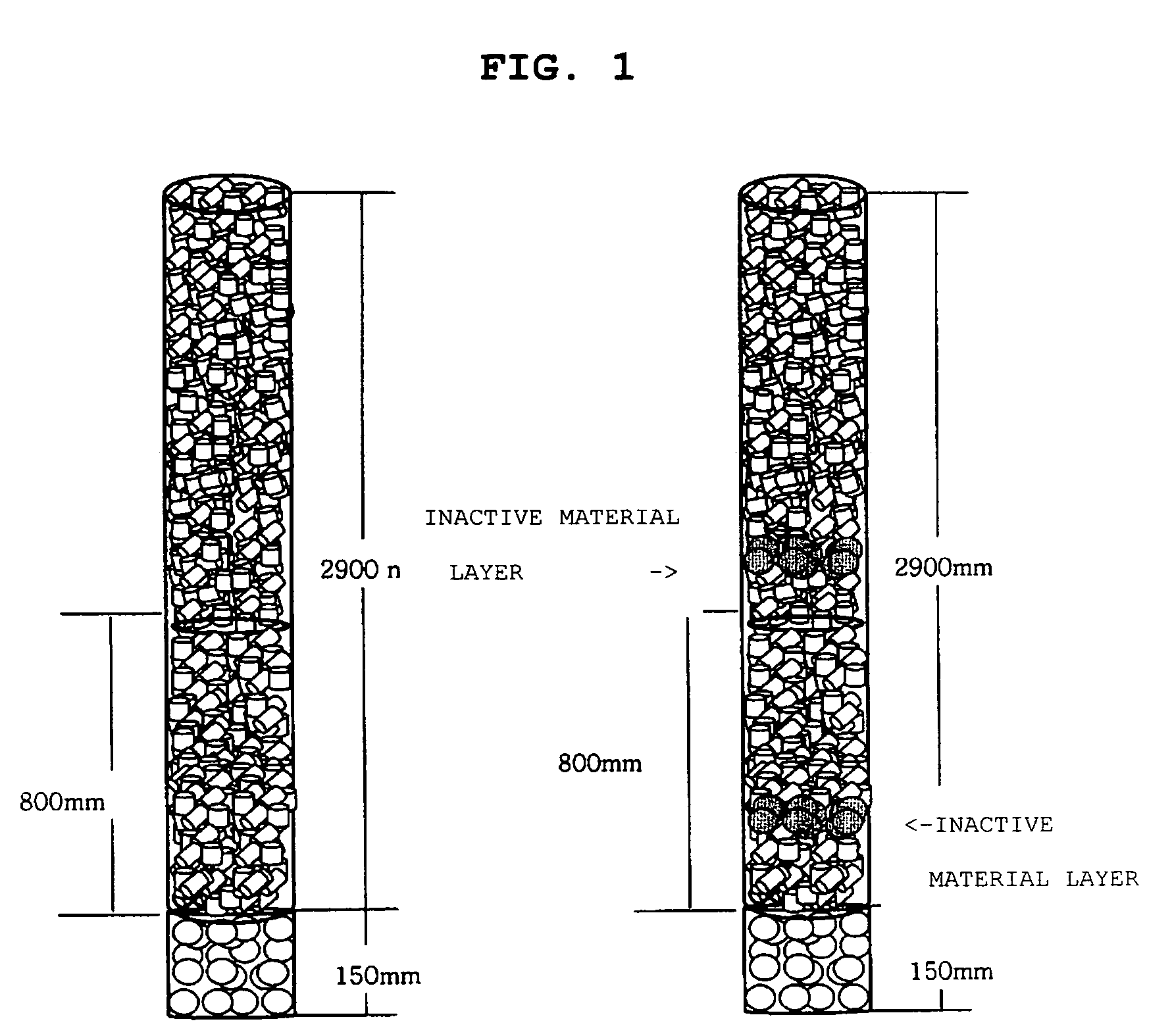Method of producing unsaturated aldehyde and/or unsaturated fatty acid
a technology of unsaturated aldehyde and unsaturated fatty acid, which is applied in the preparation of carbonyl compounds by oxidation, metal/metal-oxide/metal-hydroxide catalysts, physical/chemical process catalysts, etc. it can solve the problem of reducing the yield of (meth)acrylic acid and (meth)acrolein, generating abnormal temperature, and increasing by-products such as cox. problem, to achieve the effect o
- Summary
- Abstract
- Description
- Claims
- Application Information
AI Technical Summary
Benefits of technology
Problems solved by technology
Method used
Image
Examples
preparation example 1
[0044](Preparation of Catalyst)
[0045]2500 ml of distilled water was heated with stirring at 70-85° C. and 1000 g of ammonium molybdate was dissolved therein to form solution (1). To 400 ml of distilled water, 274 g of bismuth nitrate, 228 g of iron nitrate and 1.9 g of potassium nitrate were added and mixed thoroughly. Next, 71 g of nitric acid was added to the mixture and dissolved therein to form solution (2). 618 g of cobalt nitrate was dissolved in 200 ml of distilled water to form solution (3). Solution (2) was mixed with solution (3) and the combined solution was further mixed with solution (1), while maintaining the temperature of the solution at 40-60° C., to form a catalyst suspension.
[0046]The suspension obtained as described above was dried to provide Mo12Bi1.2Fe1.2Co4.5K0.04, which was pulverized into a size of 150 μm or less. The pulverized catalyst powder was mixed for 2 hours and formed into a cylindrical shape. The formed catalyst had an outer diameter of 4.0-8.0 mm....
example 1
[0048]To a stainless steel reactor having an inner diameter of 1 inch and heated with molten nitrate, alumina / silica as an inactive material was packed to the height of 150 mm, the catalyst obtained from Preparation Example 1 and having a size of 5 mm(±0.2) was packed to the height of 200 mm, alumina / silica as an inactive material was packed to the height of 100 mm at the point of a hot spot, and then the catalyst obtained from Preparation Example 1 and having a size of 5 mm(±0.2) was further packed to the height of 2600 mm, when viewed from the reaction gas inlet toward the outlet.
example 2
[0050]To a stainless steel reactor having an inner diameter of 1 inch and heated with molten nitrate, alumina / silica as an inactive material was packed to the height of 150 mm, the catalyst obtained from Preparation Example 1 and having a size of 7 mm(±0.2) was packed to the height of 200 mm, alumina / silica as an inactive material was packed to the height of 100 mm at the point of a hot spot, and then the catalyst obtained from Preparation Example 1 and having a size of 7 mm(±0.2) was further packed to the height of 500 mm, when viewed from the reaction gas inlet toward the outlet. Further, the catalyst obtained from Preparation Example 1 and having a size of 5 mm(±0.2) was packed to the height of 100 mm, alumina / silica as an inactive material was packed to the height of 100 mm at the point of a hot spot, and then the catalyst obtained from Preparation Example 1 and having a size of 5 mm(±0.2) was packed to the height of 1900 mm.
PUM
| Property | Measurement | Unit |
|---|---|---|
| height | aaaaa | aaaaa |
| height | aaaaa | aaaaa |
| diameter | aaaaa | aaaaa |
Abstract
Description
Claims
Application Information
 Login to view more
Login to view more - R&D Engineer
- R&D Manager
- IP Professional
- Industry Leading Data Capabilities
- Powerful AI technology
- Patent DNA Extraction
Browse by: Latest US Patents, China's latest patents, Technical Efficacy Thesaurus, Application Domain, Technology Topic.
© 2024 PatSnap. All rights reserved.Legal|Privacy policy|Modern Slavery Act Transparency Statement|Sitemap


